The Best And Worst Technology Company Stocks In 2016
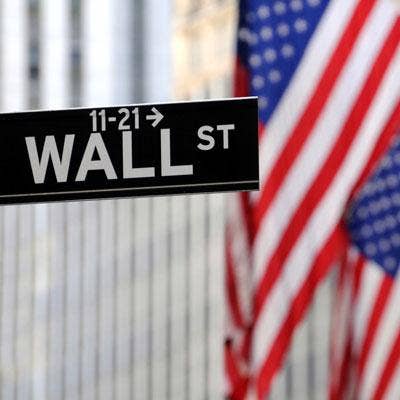
Tech Stocks: Stock Price Winners Far Outnumber Losers In 2016
While the stock markets got off to a bumpy start in 2016, they finished the year with a surge fueled by investors who expect tax cuts and fiscal stimulus spending under President Donald Trump to boost their business prospects.
A rising tide lifts, well, many boats and 30 of the 42 publicly traded IT companies on our watch list recorded stock gains during the year – the majority by double digits and one by triple digits.
How does that compare to the stock markets overall? For the year the Dow Jones Index was up 13.42 percent while the Nasdaq was up 7.50 percent.
Here's a look at who was up and who was down for the year, starting with companies with the biggest gains in share price, based on stock closing prices on Dec. 31, 2015, and Dec. 30, 2016.

Advanced Micro Devices
CEO: Lisa Su
Dec. 31, 2015: $2.87
Dec. 30, 2016: $11.34
Change: +295.12%
Some observers had written off Advanced Micro Devices as a competitive force in the semiconductor industry. And the company's stock has languished below the $3 mark for more than two years. But this year the chipmaker's share price began a steady climb early on and surged in the fourth quarter, nearly tripling in value during the year and making it No. 1 on our watch list for 2016.
Throughout the year AMD unveiled a steady stream of new microprocessors and graphics processors, including the seventh-generation Bristol Ridge and Bristol Ridge Pro processors unveiled in October.
For the company's first three quarters (ended Sept. 24) of 2016, AMD reported sales of $3.17 billion, up more than 4 percent from $3.03 billion in the first three quarters of 2015.
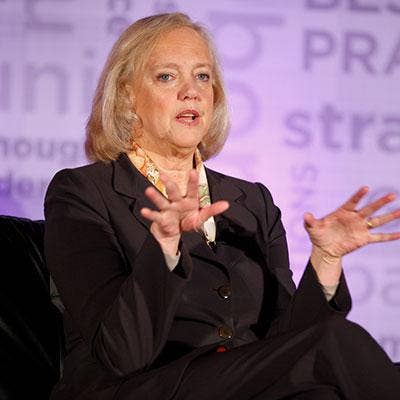
Hewlett Packard Enterprise
CEO: Meg Whitman
Dec. 31, 2015: $15.20
Dec. 30, 2016: $23.14
Change: +52.24%
This marked the first full calendar year of business for Hewlett Packard Enterprise, which was born on Nov. 1, 2015, after industry giant Hewlett-Packard Co. was split in two with HPE focused on enterprise computing products. So far shareholders apparently like what they see.
In 2016 the company took steps to focus on its core systems business, becoming a smaller, but nimbler company. Most noteworthy was the May announcement of a deal between HPE and CSC to spin off HPE's Enterprise Services business and merge it with CSC to create what will become the third largest solution provider in the market with 5,000 clients and annual revenue of $26 billion.
HPE also unveiled a plan to spin off its noncore software assets, including its Autonomy and Vertica big data software and security product portfolio, into a new company jointly owned with British multinational software maker Micro Focus. And in August the company struck a deal to acquire SGI for $275 million in a bid to expand its high-performance computing offerings.
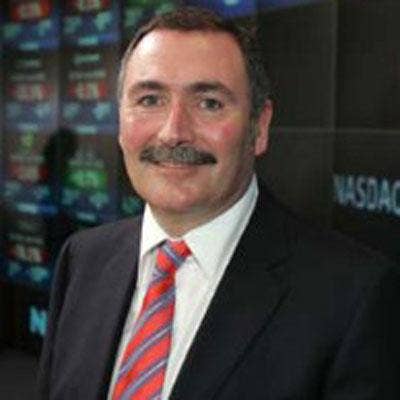
F5 Networks
CEO: John McAdam
Dec. 31, 2015: $96.96
Dec. 30, 2016: $144.72
Change: +49.26%
For its fiscal 2016 ended Sept. 30, F5 Networks reported sales of just less than $2 billion, up nearly 4 percent from $1.92 billion in fiscal 2015. But net income for the year was essentially flat at $365.9 million.

VMware
CEO: Pat Gelsinger
Dec. 31, 2015: $56.57
Dec. 30, 2016: $78.73
Change: +39.17%
VMware's stock lost a lot of ground in late 2015 – nearly one-third of its value in the year's last calendar quarter – following the announced deal for Dell to acquire storage system giant EMC for about $65 billion. Given that EMC owned 80 percent of VMware's stock, the pending acquisition created uncertainty about VMware's future even though Dell and EMC executives swore that VMware was a key part of the Dell-EMC combination.
VMware's stock started out the year below $57 per share and continued to decline in the first quarter. But its share price rebounded as the year went on and even closed out 2016 just a few bucks shy of the vendor's $82.52 closing price for 2014.
On Dec. 15 VMware struck a stock purchase agreement with Dell Technologies under which VMware will purchase $500 million of VMware Class A common stock held by Dell subsidiary EMC. Dell, in turn, will use the $500 million proceeds to repurchase Dell tracking stock for VMware, issued as part of Dell's EMC acquisition. May 5 is the target date for completing the $500 million stock purchase.
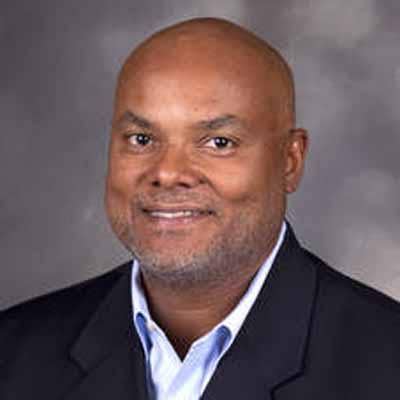
Brocade Communications Systems
CEO: Lloyd Carney
Dec. 31, 2015: $9.18
Dec. 30, 2016: $12.49
Change: +36.06%
Networking systems supplier Brocade Communications Systems agreed to be acquired by semiconductor maker Broadcom for $5.9 billion ($12.75 per share) in a deal unveiled Nov. 2.
When the deal is completed later this year, Broadcom will retain Brocade's Fibre Channel SAN switching business and divest Brocade's IP networking operations – including the Ruckus Wireless business Brocade bought earlier in 2016 for $1.2 billion.
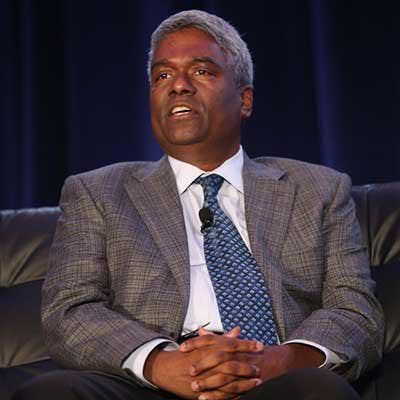
NetApp
CEO: George Kurian
Dec. 31, 2015: $26.53
Dec. 30, 2016: $35.27
Change: +32.94%
NetApp, which weathered a turbulent 2015 that included declining sales, employee layoffs and the departure of then-CEO Tom Georgens, stabilized in 2016 under CEO George Kurian.
In February the company completed its $870 million acquisition of SolidFire in a move that added SolidFire's all-flash storage array technology to NetApp's product portfolio.
For the first six months (ended Oct. 28) of NetApp's fiscal 2017, the company reported revenue of $2.63 billion, down more than 5 percent from $2.78 billion in the first half of fiscal 2016. But net income for the first half of fiscal 2017 more than doubled to $173 million from $84 million in the first six months of fiscal 2016.

Commvault Systems
CEO: N. Robert Hammer
Dec. 31, 2015: $39.35
Dec. 30, 2016: $51.40
Change: +30.62%
Commvault is a developer of enterprise data protection and information management technologies.
In October Commvault reported that for the first six months (ended Sept. 30) of its fiscal 2017, revenue increased more than 11 percent to $311.7 million from $279.9 million in the first half of fiscal 2016. The company reported a loss of $2.6 million for the most recent six-month period compared with a $10.5 million loss in the first half of fiscal 2016.

Netgear
CEO: Patrick Lo
Dec. 31, 2015: $41.91
Dec. 30, 2016: $54.35
Change: +29.68%
In December Netgear acquired Placemeter, a developer of computer vision analytics technology, with plans to integrate Placemeter's products with Netgear's Arlo Smart Home Security platform.
For the first three quarters of 2016, Netgear reported revenue of $960.4 million, up more than 2 percent from $939.8 million in the first three quarters of 2015. Net income for the three quarters more than doubled year over year to $53.7 million from $26.8 million in the same period in 2015.
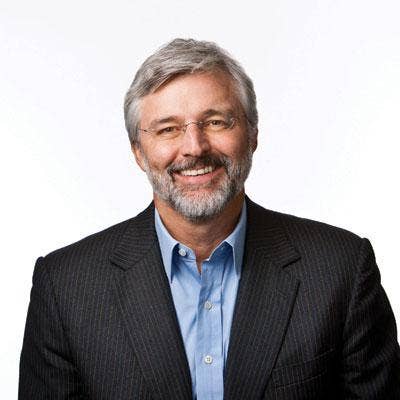
NetSuite
CEO: Zach Nelson
Dec. 31, 2015: $84.62
Nov. 7, 2016: $109.00
Change: +28.81%
In July NetSuite and Oracle unveiled a deal for Oracle to acquire the cloud application company for $109 per share, or $9.3 billion. While some institutional shareholders, most notably T. Rowe Price, tried to hold out for a higher price, the acquisition was completed Nov. 7.
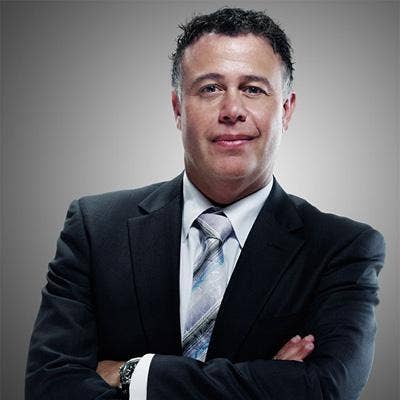
HP Inc.
CEO: Dion Weisler
Dec. 31, 2015: $11.84
Dec. 30, 2016: $14.84
Change: +25.34%
HP Inc., a marketer of personal systems and printers, was created in November 2015 through the split of Hewlett-Packard Co. into HP Inc. and Hewlett Packard Enterprise.
For all of fiscal 2016 (ended Oct. 31), HP reported revenue of $48.24 billion, down 6 percent from $51.46 billion in fiscal 2015. Net income for fiscal 2016 was $2.5 million, down 45 percent percent from $4.6 million one year earlier.
In October HP disclosed plans to cut up to 4,000 jobs across multiple divisions during the next three years as part of a restructuring plan the company forecasts will save it about $200 million to $300 million in annual expenses beginning in fiscal 2020.

Lexmark International
CEO: David Reeder
Dec. 31, 2015: $32.45
Nov. 29, 2016: $40.49
Change: +24.78%
In October 2015 printer maker Lexmark began an "exploration of strategic alternatives to enhance shareholder value." On April 19 Lexmark unveiled a deal to be acquired by Apex Technology Co. Ltd. and PAG Asia Capital for $40.50 a share, or approximately $3.6 billion. The move followed a long period during which Lexmark was transitioning from a hardware-centric printer manufacturing company to focus more on document management software and print management solutions.
The acquisition was completed on Nov. 29 and Lexmark's stock ceased trading on the New York Stock Exchange that day. David Reeder, formerly vice president and chief financial officer, was named the company's president and CEO, succeeding the departing Paul Rooke.
Lexmark's new owners have separated its enterprise software group, rebranded it to "Kofax" (the name of an earlier Lexmark acquisition) and put that business up for sale. Going forward Lexmark will focus on its imaging business, especially in Asia and the Asia-Pacific region.
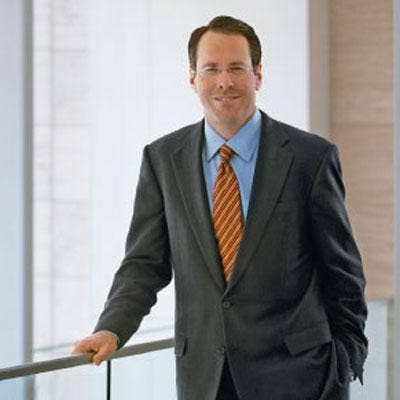
AT&T
CEO: Randall Stephenson
Dec. 31, 2015: $34.41
Dec. 30, 2016: $42.53
Change: +23.60%
On Oct. 22 AT&T unveiled an agreement to buy global entertainment and media powerhouse Time Warner for $85.4 billion in cash and stock. The acquisition, which AT&T hopes to close this year, is part of a broader trend among telecommunications carriers adding content to their offerings – Verizon's pending deal to acquire Yahoo being another example.
For the first nine months of 2016, AT&T reported total revenue of $121.95 billion (including DirecTV, which AT&T acquired in July 2015), up 16.5 percent from $104.68 billion in the same period in 2015. Operating income for the first nine months of 2016 was $20.10 billion, up 16.5 percent from $17.25 billion one year earlier.
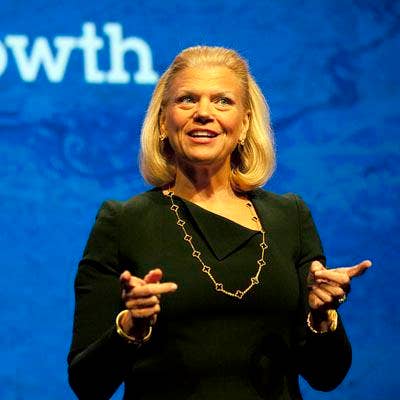
IBM
CEO: Virginia Rometty
Dec. 31, 2015: $137.62
Dec. 30, 2016: $165.99
Change: +20.61%
IBM has been undergoing a transformation, reducing its reliance on sales of IT hardware and other legacy products in favor of products and services related to cloud computing, the Internet of Things and other growth areas.
IBM's acquisitions in 2016 included Truven Health Analytics for $2.6 billion and solution provider Blue Wolf for a reported $200 million.
In mid-December CEO Ginny Rometty pledged to create 25,000 jobs in the U.S. during the next four years and invest $1 billion in employee training and development.
For the first nine months (ended Sept. 30) of 2016, IBM reported revenue of $58.15 billion, down 2.5 percent from $59.68 billion in the first nine months of 2015. Net income for the nine-month period was $7.37 billion, down more than 17 percent from $8.73 billion in the same period of 2015.
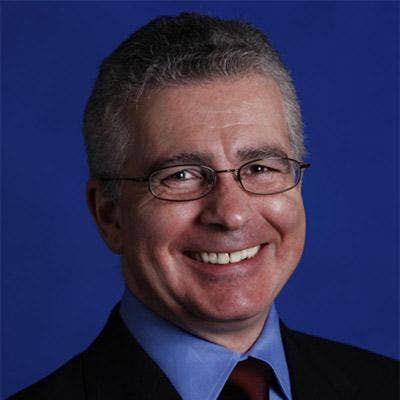
Citrix Systems
CEO: Kirill Tatarinov
Dec. 31, 2015: $75.65
Dec. 30, 2016: $89.31
Change: +18.06%
In January Citrix named former Microsoft executive Kirill Tatarinov to be the company's new CEO. At Microsoft Tatarinov managed the vendor's $2 billion Business Solutions division, including its Dynamics ERP and CRM software products.
On July 26 Citrix and LogMeIn unveiled a deal for LogMeIn to merge with Citrix's GoTo business in a "Reverse Morris Trust" transaction valued at $1.8 billion based on the shares to be issued and LogMeIn's July 25 closing price of $65.31.
Citrix and LogMeIn shareholders will each own approximately 50 percent of the combined company, which will be led by LogMeIn president and CEO Bill Wagner. The company is expected to have annual revenue of more than $1 billion.
Citrix expects to complete the spinoff and merger by Jan. 31.
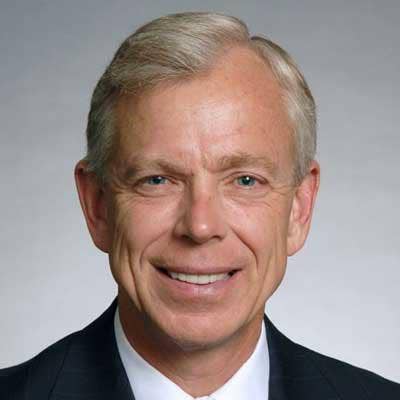
Verizon Communications
CEO: Lowell McAdam
Dec. 31, 2015: $46.22
Dec. 30, 2016: $53.38
Change: +15.49%
In July Verizon struck a deal to acquire online portal and media provider Yahoo for $4.83 billion. But the acquisition was thrown into question later in the year when Yahoo acknowledged that it had been hacked twice, in 2013 and 2014, compromising hundreds of millions of user accounts. By year's end reports continued that Verizon was seeking a lower price for Yahoo.
Verizon also exited the data center business in 2016, selling its cloud hosting and data center business assets in North America and Latin America to global data center operator Equinix for $3.6 billion.

Symantec
CEO: Greg Clark
Dec. 31, 2015: $21.00
Dec. 30, 2016: $23.89
Change: +13.76%
More than a year after unveiling a plan to spin off Veritas, its data management technology unit, Symantec completed that split on Jan. 29, 2016, by selling Veritas to a private equity firm and emerging as a company focused solely on its security products. Less than a week later Symantec announced a $500 million strategic investment from private equity firm Silver Lake.
On June 13 Symantec announced a deal to acquire security software developer Blue Coat Systems for $4.65 billion and the acquisition was completed Aug. 1. Blue Coat CEO Greg Clark became Symantec's new CEO while Blue Coat president and Chief Operating Officer Michael Fey took on those same posts at Symantec.
And on Nov. 20 Symantec unveiled a deal to acquire LifeLock, a supplier of consumer identity protection and remediation services, for $2.3 billion.

Western Digital
CEO: Steve Milligan
Dec. 31, 2015: $60.05
Dec. 30, 2016: $67.95
Change: +13.16%
In May Western Digital, a leading manufacturer of hard disk drives, completed its acquisition of SanDisk, adding that company's flash memory storage microprocessors to its technology lineup. The acquisition, valued at $16 billion, was seen as a bid to accelerate Western Digital's transition from disk drives to solid-state data storage.
In February Chinese company Unisplendour terminated a deal to acquire a 15 percent stake in Western Digital for $3.775 billion after the Committee on Foreign Investment in the U.S. said it would investigate the investment.
For the company's fiscal 2017 first quarter (ended Sept. 30), Western Digital reported revenue of $4.71 billion, up 40 percent from $3.36 billion in the first quarter of fiscal 2016. The company reported a loss of $366 million in the quarter compared with net income of $283 million in the same quarter one year earlier.
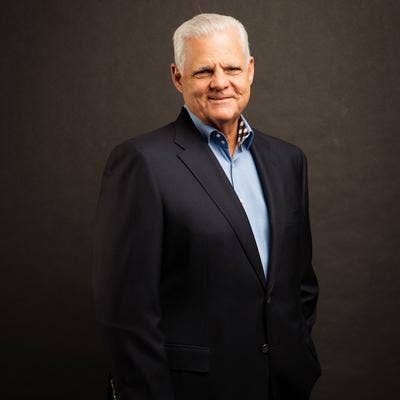
EMC
CEO: Joe Tucci
Dec. 31, 2015: $25.68
Sept. 6, 2016: $29.05
Change: +13.12%
Nearly one year after unveiling a deal for the biggest acquisition in the history of the IT industry, Dell completed its $65 billion buyout of EMC on Sept. 7, becoming the new Dell Technologies in the process.
The acquisition is expected to boost Dell's efforts to become a supplier of a full range of IT systems for the enterprise data center.
EMC's stock closed at $29.05 on Sept. 6, the last day it was publicly traded.
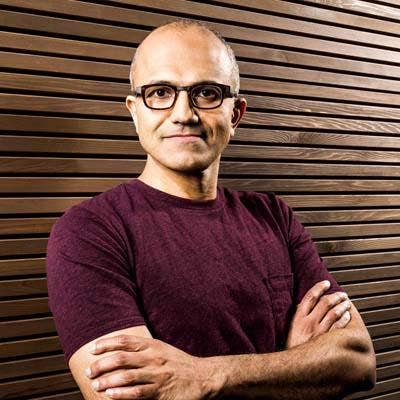
Microsoft
CEO: Satya Nadella
Dec. 31, 2015: $55.48
Dec. 30, 2016: $62.17
Change: +12.06%
In June Microsoft unveiled an agreement to acquire LinkedIn, the social media network for professionals, for $26.2 billion. It was the biggest acquisition in the software giant's history and the price tag was a roughly 50 percent premium on the company's market capitalization. Microsoft completed the acquisition on Dec. 8.
In July chief operating officer Kevin Turner said that he was leaving Microsoft to become CEO of Citadel Securities. He was among the last of the top executives at the company who worked under former CEO Steve Ballmer.
In May and in July Microsoft initiated a series of layoffs totaling nearly 5,000 employees as part of a plan to restructure parts of the company. The layoffs largely focused on its smartphone hardware business.
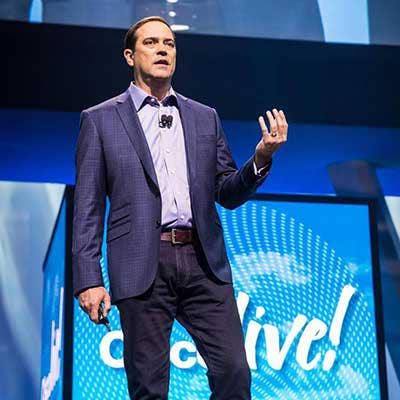
Cisco Systems
CEO: Chuck Robbins
Dec. 31, 2015: $27.16
Dec. 30, 2016: $30.22
Change: +11.27%
Chuck Robbins, who took the reins as CEO in 2015, has been refocusing Cisco on software and services-centric areas like security, Internet of Things, cloud and next-generation data center technologies. The real changes began in March when the company unveiled plans to reorganize its 25,000-member engineering operations into four groups targeting networking, security, cloud services and platforms.
The shakeups led to the departure of some high-level executives, particularly in engineering and product development, including CTO and top cloud executive Zorawar Biri Singh and chief development officer Pankaj Patel.
In 2016 Cisco spent around $3 billion on seven acquisitions, including application cloud management platform developer CliQr Technologies, IoT specialist Jasper Technologies and collaboration software vendor Worklife.

CA Technologies
CEO: Michael Gregoire
Dec. 31, 2015: $28.56
Dec. 30, 2016: $31.77
Change: +11.24%
CA Technologies has been reinventing itself with a focus on systems and cloud management, security and DevOps software.
In September the company expanded its DevOps product portfolio by acquiring BlazeMeter, a provider of open-source application performance testing tools, for an undisclosed amount. On Dec. 1, CA struck a deal to acquire Automic, a developer of software for automating IT and business processes, for approximately $636 million.
For the first six months (ended Sept. 30) of its fiscal 2017, CA reported revenue of $2.02 billion, up nearly 2 percent from $1.98 billion in the first half of fiscal 2016. Net income for the period was $410 million, up more than 6 percent from $386 million one year before.

Amazon
CEO: Jeff Bezos
Dec. 31, 2015: $675.89
Dec. 30, 2016: $749.87
Change: +10.95%
Amazon's stock has been one of the fastest growing in recent years, but that pace moderated somewhat in 2016. But its stock price, fueled in part by the rapid growth of its Amazon Web Services business, still managed double-digit growth last year.
For the first three quarters (ended Sept. 30) of 2016 Amazon reported total sales of $92.25 billion, up more than 29 percent from $71.26 billion in the same period in 2015. Net income soared for the three quarters to $1.62 billion from $114 million in the same period one year earlier.
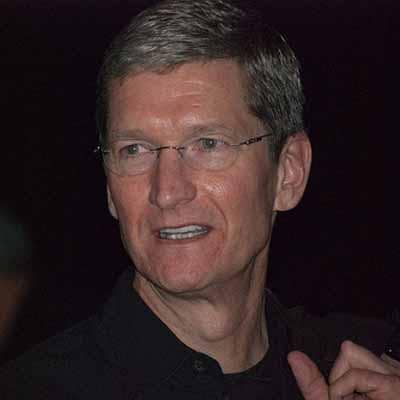
Apple
CEO: Tim Cook
Dec. 31, 2015: $105.26
Dec. 30, 2016: $115.82
Change: +10.03%
Apple's stock grew by double digits in 2016 despite reporting in October the company's first year-over-year annual sales decline since 2001 and a drop in the giant company's profits.
For all of fiscal 2016 (ended Sept. 24), Apple reported sales of $215.64 billion, down nearly 8 percent from $233.72 billion in fiscal 2015. Net income for fiscal 2016 was $45.69 billion, down more than 14 percent from $53.39 billion in fiscal 2015.
Apple reported slower sales of iPhones and iPads in the fourth quarter, along with a significant decline in sales of the company's then-aging line of Mac laptop and desktop computers. (The company debuted new Macs in late October.)
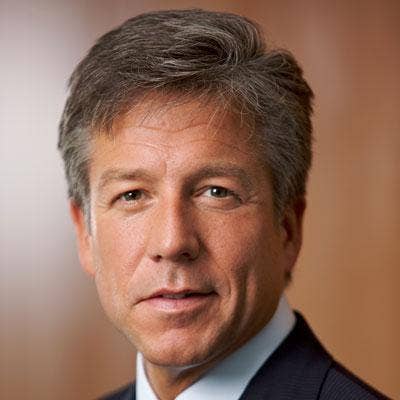
SAP
CEO: Bill McDermott
Dec. 31, 2015: $79.10
Dec. 30, 2016: $86.43
Change: +9.27%
SAP has been transforming itself from its core business of selling on-premise enterprise applications to providing cloud-based applications and services to customers of all sizes.
In its third quarter ended Sept. 30, the company reported that cloud subscription and support revenue surged 28 percent year over year to $1.13 billion. But unlike some competitors, whose traditional software license sales are declining as their cloud revenue grows, SAP's software license sales and support revenue grew 5 percent in the quarter.
For the first three quarters (ended Sept. 30) of 2016, SAP reported sales of $16.21 billion, up 6 percent from $15.27 billion in the first three quarters of 2015. After-tax profit for the period surged 19 percent to $2.23 billion from $1.88 billion in the first three quarters of 2015.
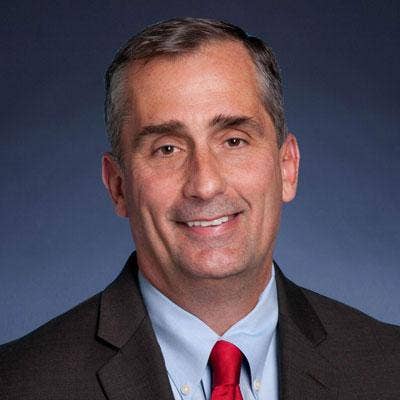
Intel
CEO: Brian Krzanich
Dec. 31, 2015: $34.45
Dec. 30, 2016: $36.30
Change: +5.37%
Stagnant PC sales have meant slower revenue growth for Intel in recent years given its dependence on selling processors for that market. The company has struggled to compete in the market for chips for mobile devices, but it has been growing its sales of processors for data center systems, the nascent Internet of Things market, artificial intelligence and other emerging areas.
In September Intel hired Robert Swan as executive vice president and chief financial officer, overseeing the company's global finance and IT organizations, as well as the Corporate Strategy Office. Swan joined Intel from equity firm General Atlantic. He replaced Stacy Smith, who took on a broader role leading Intel's manufacturing, sales and operations.
For the first nine months (ended Oct. 1) of 2016, Intel reported revenue of $43.01 billion, up more than 6 percent from $40.44 billion in the same period of 2015. Net income for the first nine months of 2016 was $6.75 billion, however, down more than 13 percent from $7.81 billion in the same period one year earlier.
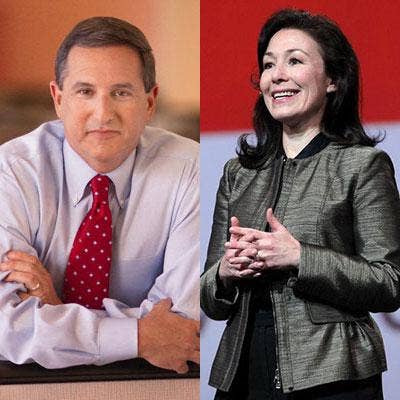
Oracle
Co-CEOs: Mark Hurd and Safra Catz
Dec. 31, 2015: $36.53
Dec. 30, 2016: $38.45
Change: +5.26%
Oracle is another company that's transitioning from selling on-premise software to cloud software and services. In November it acquired cloud application developer NetSuite for $9.3 billion.
Also in November Oracle struck a deal to acquire Dyn, an Internet performance and domain name system service provider, for a reported $600 million.
For the first six months (ended Nov. 30) of fiscal 2017, Oracle reported revenue of $17.63 billion, up 1 percent from $17.44 billion in the first half of fiscal 2016. Net income for the first half of fiscal 2017 was $3.86 billion, down 2 percent from $3.95 billion in the first half of fiscal 2016.

Seagate Technology
CEO: Stephen Luczo
Dec. 31, 2015: $36.66
Dec. 30, 2016: $38.17
Change: +4.19%
Data storage technology developer Seagate reported that revenue in its fiscal 2017 first quarter (ended Sept. 30) declined more than 4 percent to $2.80 billion from $2.93 billion in the same quarter one year earlier. Net income in the quarter exploded to $167 million, however, compared with $34 million one year before.
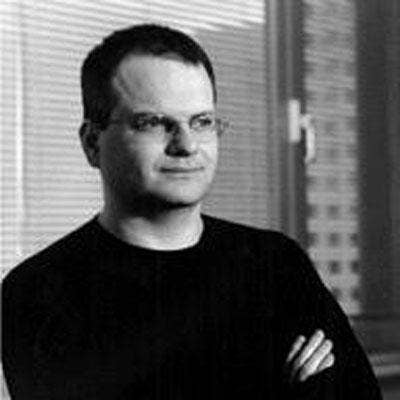
Check Point Software Technologies
CEO: Gil Shwed
Dec. 31, 2015: $81.38
Dec. 30, 2016: $84.46
Change: +3.78%
In May Check Point Software Technologies' board extended the company's ongoing share repurchase program, authorizing the repurchase of up to $250 million shares per quarter up to an aggregate of $1.5 billion.
For the first nine months (ended Sept. 30) of 2016, Check Point reported revenue of $1.25 billion, up 7 percent from $1.17 billion in the first nine months of 2015. Net income for the nine months was $502.9 million, up more than 2 percent from $491.4 million in the same period one year earlier.
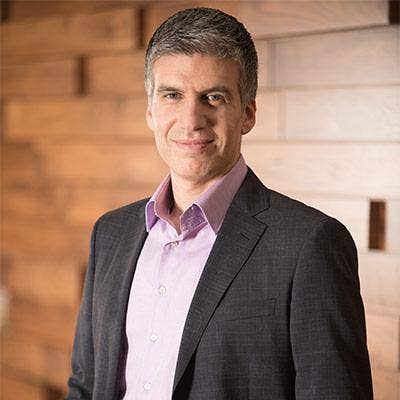
Juniper Networks
CEO: Rami Rahim
Dec. 31, 2015: $27.60
Dec. 30, 2016: $28.26
Change: +2.39%
On Dec. 1 Juniper Networks unveiled a deal to acquire AppFormix, a developer of cloud operations management software that incorporates big data analytics and machine-learning capabilities.
For the nine months ended Sept. 30, Juniper Networks reported revenue of $3.60 billion, up nearly 2 percent from $3.54 billion in the first nine months of 2015. But net income for the first nine months of 2016 fell more than 7 percent to $403.8 million from $435.9 million in the same period in 2015.
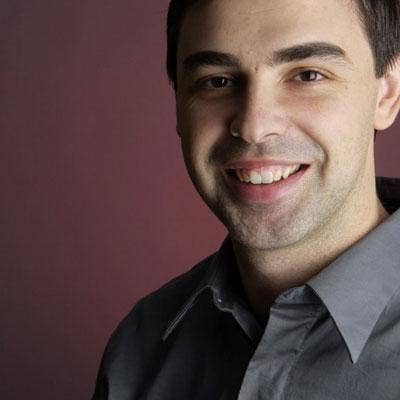
Alphabet (Google)
CEO: Larry Page
Dec. 31, 2015: $758.88
Dec. 30, 2016: $771.82
Change: +1.71%
In March Google unveiled an ambitious plan to build as many as a dozen new data centers around the world, putting cloud servers closer to large swaths of potential customers and improving the availability of the Google Cloud Platform.
For the first nine months of 2016 Alphabet, Google's parent company, reported revenue of $53.66 billion, down more than 16 percent from $64.21 billion in the same period in 2015. Net income for the nine-month period was $11.43 billion, down more than 19 percent from $14.15 billion in the same period in 2015.

Fortinet
CEO: Ken Xie
Dec. 31, 2015: $31.17
Dec. 30, 2016: $30.12
Change: -3.37%
Security technology vendor Fortinet had a turbulent 2016, undertaking an extensive reorganization of its U.S. enterprise sales operations and laying off sales and marketing executives and employees. In October the company, blaming the turbulence from the reorganization, unexpectedly said that third-quarter sales and earnings would be lower than Wall Street estimates.
For its third quarter ended Sept. 30, Fortinet reported revenue of $316.6 million, up 22 percent from $260.1 million in the same quarter in 2015. But net income was $6.3 million, down 23 percent from $8.2 million one year before.
For the nine months ended Sept. 30, Fortinet reported revenue of $912.6 million, up 28 percent from $712.7 million in the same nine months in 2015. But net income for the nine-month period declined 33 percent in 2016 to $7.0 million from $10.5 million one year earlier.
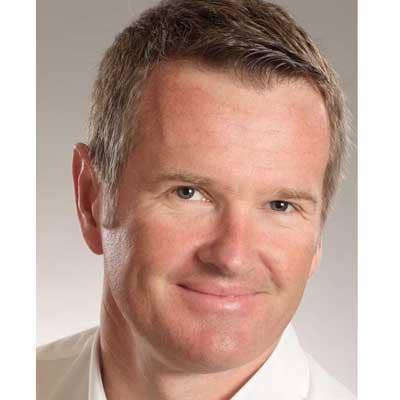
Qlik Technologies
CEO: Lars Bjork
Dec. 31, 2015: $31.66
Aug. 19, 2016: $30.50
Change: -3.66%
Qlik Technologies, a developer of data analysis and visualization software, announced a deal on June 2 to be acquired by private equity firm Thoma Bravo for $30.50 per share of Qlik stock, putting the total value of the acquisition at $3 billion.
Qlik shareholders approved the deal Aug. 17 and the acquisition closed Aug. 22. Qlik's stock stopped trading on Aug. 19.
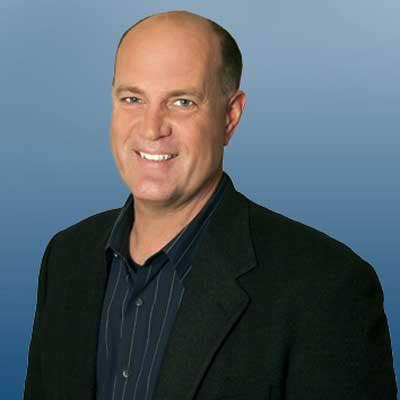
Quantum
CEO: Jon Gacek
Dec. 31, 2015: $0.93
Dec. 30, 2016: $0.83
Change: -10.75%
Quantum's shares have languished below $1 all year, but they trended upward in the second half of the year after falling below 40 cents per share in May and June.
For the first six months (ended Sept. 30) of its fiscal 2017 Quantum reported revenue of $251.0 million, up 10 percent from $227.9 million in the same period in fiscal 2016. The storage technology company, barely breaking into the black, reported net income of $31,000 for the six months compared with a $22.0 million loss in the first six months of fiscal 2016.
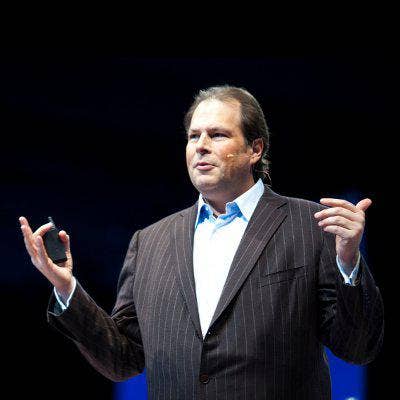
Salesforce.com
CEO: Marc Benioff
Dec. 31, 2015: $78.40
Dec. 30, 2016: $68.46
Change: -12.68%
Salesforce.com CEO Marc Benioff has vowed to be the first cloud software company to hit the $10 billion revenue threshold. In November the company said it expects to achieve that benchmark in fiscal 2018, which ends Jan. 31, 2018, with revenue between $10.10 billion and $10.15 billion.
For the first three quarters (ended Oct. 31) of fiscal 2017, Salesforce reported revenue of $6.10 billion, up 25.5 percent from $4.86 billion in the first three quarters of fiscal 2016. The company reported net income of $231.1 million for the nine-month period compared with a $21.9 million loss in the same period one year earlier.

Splunk
CEO: Doug Merritt
Dec. 31, 2015: $58.81
Dec. 30, 2016: $51.15
Change: -13.02%
Splunk, a fast-growing developer of real-time operational intelligence software, built up its executive ranks in 2016. In March the company hired Salesforce.com executive Susan St. Ledger to be the company's new chief revenue officer. In November it again reached into Salesforce.com to hire away Brian Goldfarb to be its new chief marketing officer. Also in November, it hired Richard Campione as chief product officer.
For the first three quarters (ended Oct. 31) of its fiscal 2017, Splunk reported revenue of $643.5 million, up 43.5 percent from $448.4 million in the first three quarters of fiscal 2016. But the company's bottom-line loss grew to $281.0 million from $199.4 million in the same three quarters of fiscal 2016.

Red Hat
CEO: James Whitehurst
Dec. 31, 2015: $82.81
Dec. 30, 2016: $69.70
Change: -15.83%
Red Hat cracked the $2 billion mark in its fiscal 2016 ended Feb. 29 with the open-source software developer reporting that revenue reached $2.05 billion during the fiscal year, up nearly 15 percent from $1.79 billion in fiscal 2015.
For the first three quarters (ended Nov. 30) of fiscal 2017, Red Hat reported revenue of $1.78 billion, up 18 percent from $1.51 billion in the first three quarters of fiscal 2016. Net income for the last three quarters was $187.9 million, up 28 percent from $146.3 million one year earlier.
In June Red Hat's board authorized a share repurchase plan of up to $1 billion of the company's common stock.
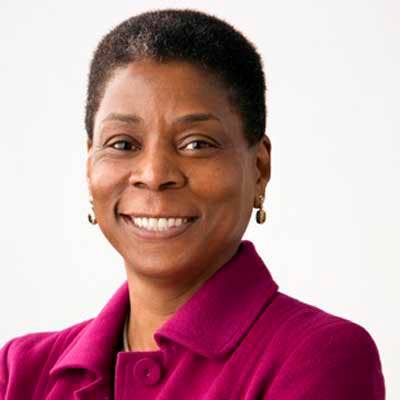
Xerox
CEO: Ursula Burns
Dec. 31, 2015: $10.63
Dec. 30, 2016: $8.73
Change: -17.87%
Xerox spent most of 2016 preparing to carry out its plan to split into two companies: One named Xerox is focused on printers and other document technology hardware with expected annual sales of $11 billion, and the other named Conduent providing business process outsourcing services with expected annual sales of $7 billion.
The split was effective Jan. 2, 2017. As of that date Ursula Burns became Xerox's chairman and Jeff Jacobson took over as the company's CEO.
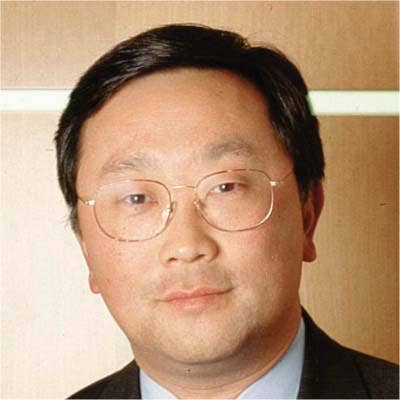
BlackBerry
CEO: John Chen
Dec. 31, 2015: $9.28
Dec. 30, 2016: $6.89
Change: -25.75%
For the first three quarters (ended Nov. 30) of its fiscal 2017, BlackBerry reported revenue of $1.02 billion, down nearly 40 percent from $1.70 billion in the first three quarters of fiscal 2016. In the most recent three quarters, the company reported a loss of $1.16 billion compared with net income of $30 million in the same period one year earlier.
In September BlackBerry hired Steven Capelli, most recently president of worldwide field operations at Sybase, to be the mobile device and software company's chief financial officer.
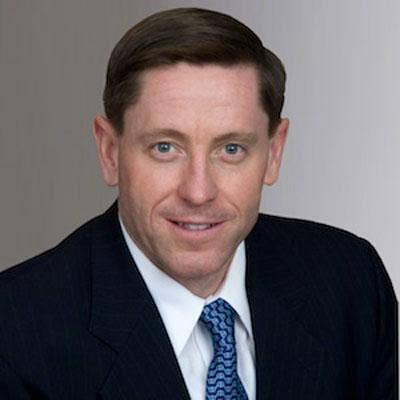
Palo Alto Networks
CEO: Mark McLaughlin
Dec. 31, 2015: $176.14
Dec. 30, 2016: $125.05
Change: -29.01%
In August Palo Alto Networks promoted Mark Anderson, its top sales executive, to president with responsibility for the company's sales, go-to-market strategy, customer support and business development operations. To replace him the company hired Riverbed Technology executive Dave Peranich as executive vice president of worldwide sales.
For its fiscal 2017 first quarter (ended Oct. 31), Palo Alto Networks reported revenue of $398.1 million, up 34 percent from $297.2 million in the first quarter of fiscal 2016. But the company's bottom-line loss widened to $61.8 million from a $39.9 million loss in the same quarter one year earlier.

Lenovo Group
CEO: Yang Yuanqing
Dec. 31, 2015: $20.08
Dec. 30, 2016: $12.00
Change: -40.24%
Lenovo has been hit hard by the worldwide slowdown in PC sales in recent years and increased competition from Dell, Hewlett Packard Enterprise and other data center system vendors.
Chris Frey, a 10-year Lenovo veteran and head of the company's commercial sales operations in North America, left the company in October.
For its fiscal 2017 second quarter ended Sept. 30, Lenovo reported sales of $11.23 billion, down 7.5 percent from $12.15 billion in the same quarter one year earlier. But the company turned around its bottom line, reporting a profit of $156.8 million compared with a $713.7 million loss one year earlier.
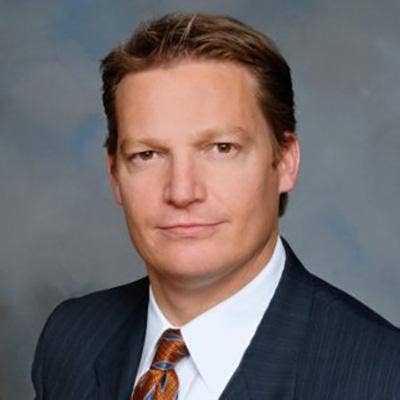
FireEye
CEO: Kevin Mandia
Dec. 31, 2015: $20.74
Dec. 30, 2016: $11.90
Change: -42.62%
Once-high-flying security technology developer FireEye had a turbulent 2016 including CEO Dave DeWalt's stepping down, a major restructuring that included layoffs of 10 percent of its workforce, and the September departure of company founder and technical visionary Ashar Aziz.
For the first three quarters of 2016, FireEye reported revenue of $529.4 million, up nearly 21 percent from $438.2 million in the first three quarters of 2015. But the company reported a loss of $418.6 million for the three quarters, up from the $403.1 million loss in the same period of 2015.
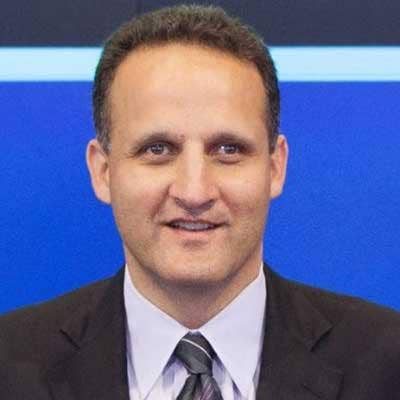
Tableau Software
CEO: Adam Selipsky
Dec. 31, 2015: $94.22
Dec. 30, 2016: $42.15
Change: -55.26%
Tableau's stock was been on a roller coaster in 2016, hitting the mid-$90s at the start and then plunging below $40 in early February after what Wall Street viewed as weak financial guidance. The stock recovered to above $60 per share in August before falling back below $50 for the last quarter of the year.
On Aug. 22 Tableau named Adam Selipsky to be the new president and CEO of the business analytics software developer, replacing co-founder and CEO Christian Chabot, who continues as company chairman. Selipsky joined Tableau from Amazon Web Services where he was vice president of marketing, sales and support.
For the first three quarters of 2016 (ended Sept. 30), Tableau reported revenue of $576.3 million, up nearly 28 percent from $450.8 million in first three quarters of 2015. The company reported a loss of $123.4 million for the three quarters, up from the $42.4 million loss in the same period one year earlier.